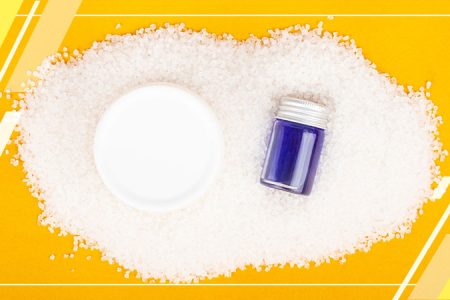Picric acid, or 2,4,6‐trinitrophenol, or picronitric acid, is an organic compound that is a slightly soluble, odorless crystalline solid that is pale yellow in color. (O₂N)₃C₆H₂OH is the picric acid formula. A British chemist, Peter Woulfe, invented picronitric acid in 1771 by treating indigo with nitric acid.
A French chemist, Jean-Baptiste-André Dumas, named this acid picric, derived from the Greek word pikros, which means bitter. Jean named it Picric because of its yellow aqueous solution and very bitter taste. It explodes due to percussion or rapid heating. Additionally, the interaction of this acid with heavy metals, like lead, copper, or silver, will result in salt formations, which can also lead to an explosion.
Since its inception, this acid has found application in various sectors, serving as a yellow dye, antiseptic, and defense explosives. In this blog, let us have a look at an overview of picric acid, its explosion and health threats, and precautions for handling and storing it.
Explosion Risks
Picric acid is a strong explosive when it is dry or has less than 10% water. However, it is safe to handle when it is hydrated. This acid is extremely sensitive to heat, friction, and shock. Post interaction of picronitric acid with heavy metals like zinc, nickel, iron, mercury, lead, and copper forms salt, which are highly sensitive explosives. The interaction of this acid with ammonia and amines also can create sensitive explosives. A sensitive calcium picrate is developed after this acid comes in contact with plasters and concrete floors.
Health Threats
This organic compound is toxic if inhaled, orally consumed, or absorbed through the skin. Inhaling the acid can even lead to lung damage. It also has a risk of liver or kidney damage due to chronic exposure to the toxic substance. Individuals who come in contact can have an allergic skin reaction or feel irritation in the eyes and skin.
How to Purchase Picric Acid?
If not required, solid picric should be strictly banned from the inventory. You can purchase premixed stains for use. There is also a 1% picric acid solution available in the market for use in stain preparation. The purchase of Trinitrophenol should be limited to the smallest practical quantities.
What are the Handling Precautions for 2,4,6‐Trinitrophenol?
It is suggested that metal spatulas should not be used to extract picronitric acid. This acid should not be stored in containers that have metal lids or are made up of metal. It is essential to clean the bottle’s neck, cap, and threads using a wet cloth before resealing the moistened solid or solution. The disposal of picric acid should be done with proper care. The cloth used to wipe the residues needs to be kept in plastic or glass containers, labelled as hazardous waste. The material should be thoroughly wetted before disposal. A fume hood can be used to handle picronitric acid safely.
What are the Personal Protective Equipment (PPE) Used to Handle Picric Acid?
Lab coats, chemical‐resistant gloves, safety glasses, and non‐perforated shoes that cover the feet completely are the PPE kits used while handling picronitric acid. Depending on the procedure specifics, more PPE might be required.
Precautions for Handling Picric Acid Containers
Lab technicians skilled in handling hazardous materials should inspect the storage containers every quarter. It is crucial to document the inspection notes on the bottle. The following are the factors that need to be considered while inspecting containers:
- There should always be a layer of water on top of the crystals inside the bottle. During the inspection, it is important to ensure that no dried crystals are formed near the bottle cap or on the outer side. This inspection of the 2,4,6‐trinitrophenol container can also be done without opening the bottle.
- If the lab technician finds evidence of this organic compound outside the bottle or if there is no sufficient water, it can be a potential detonation threat while opening the container. The dry crystals can also be present in the container’s thread.
- If the lab technician finds the container is safe to open, they should rehydrate the picric acid with deionized or distilled water. This step is an essential step to ensure the substance is thoroughly wetted.
- During the inspection of the container, the receipt date needs to be checked. Bottles with more than two years of storage date should be disposed of as hazardous waste.
- Lab technicians need to make sure that they record the inspection date on the bottle.
How to Store Picric Acid?
The containers with picronitric acid or its solutions stored should have a receipt date and last date of opening. The storage of the container should be in dry, cool, and well-ventilated areas with no interaction with any heat source.
There should always be a water layer on top of the solid to ensure they are thoroughly wetted. The classification of 2,4,6‐trinitrophenol is under group X of the Stanford chemical storage. Hence, the containers need to be stored separately from all other chemicals.
Conclusion
Picronitric acid decomposes carbonates and titrates the bases as it is much stronger than phenol. Since the inception of picric acid, it has been used as military explosives. Additionally, this acid has antiseptic and astringent functionalities. Hence, it can be used in various medical applications as a surface anesthetic and burn ointment.
